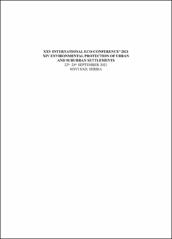The activity of natural radionuclides in samples from the environment

View/
Date
2021-09-22Author
Mihaljev, Željko
Živkov-Baloš, Milica
Jakšić, Sandra
Popov, Nenad
Metadata
Show full item recordAbstract
The samples of soil, animal feed (lucerne, fish meal, meat-bone meal, mineral feedstuffs) and
biomaterials (meat, liver and kidneys of wild boars) were analyzed for the presence of natural
radiation. The results revealed the presence of the following natural radionuclides: K-40, Ra-226,
Th-232, U-235 and U-238. Activity concentrations of radionuclides gamma emitters were determined
by the method of low-level gamma spectrometry on high resolution HPGe coaxial detector
system produced by ORTEC. The gamma spectra were acquired and analyzed using the
GammaVision® software. Concentrations of thorium and uranium in all samples were analyzed
by a technique of inductively coupled plasma with mass spectrometry (ICP-MS 7700, Agilent).
Based on the results obtained, it can be concluded that in all tested samples, the highest concentration
of activity originates from natural radionuclide of potassium-40. Natural radionuclide
U-238 is to be particularly emphasized because of its activity ranging within an interval from 32
to as high as 1474 Bq/kg. The obtained results strongly indicate the necessity of continuous
control of radioactivity level in mineral supplements for animal feed both those originating from
domestic production and imported ones. This is a safe way to prevent the entry of radionuclides
from anthropogenic sources into the food chain and thus reduce the share of "technologically
increased natural radioactivity" in the total radiation exposure of the population. Also, in this
study, the content of the tested radionuclides in different environmental samples gives interesting
additional data for an approximate calculation of the average input of radioactive residues.
